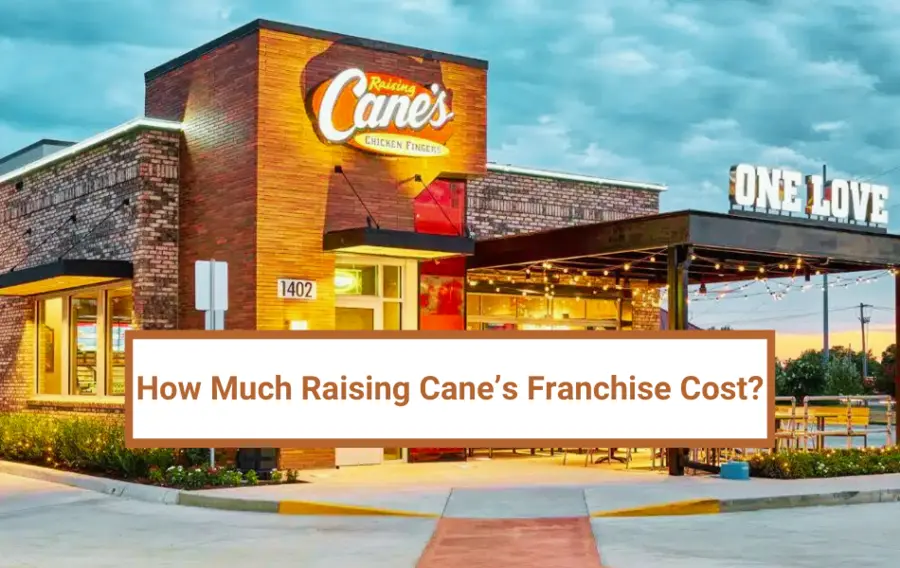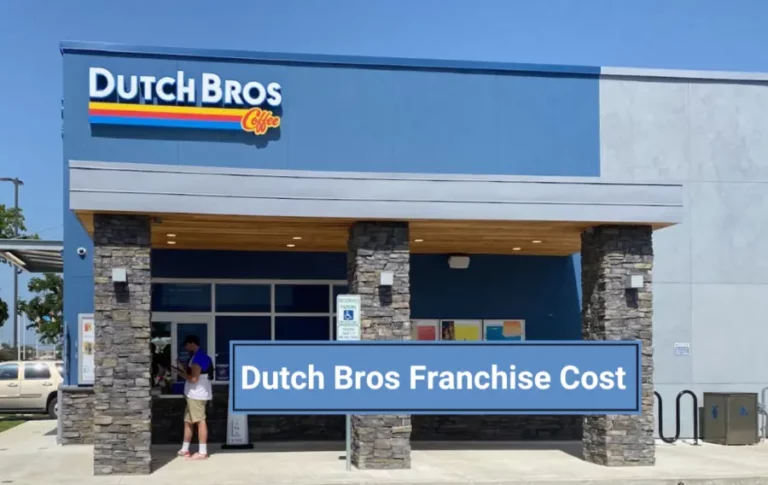Raising Cane’s Franchise Cost 2024 – Full Explained

Raising Cane’s Chicken Fingers is a renowned name in the fast-food industry, quickly gaining recognition for its unique single-product strategy: serving high-quality chicken fingers. Founded in Baton Rouge, Louisiana, in 1996 by Todd Graves and Craig Silvey, the brand has since embarked on a rapid and successful expansion trajectory, with more than 650 locations globally.
This blog post will share in-depth explanation of Raising Cane’s Franchise Cost, fees, opportunity and profits. Let’s get started;
Content Outline
Raising Cane’s Franchise History
The story behind Raising Cane is a testament to perseverance and the power of a unique idea. Graves, the founder, even received the worst grade in his class for his business plan for a chicken finger restaurant at Louisiana State University. Undeterred, he pursued his vision, resulting in the establishment of a restaurant chain loved by millions.
When talking about Raising Cane’s, it’s necessary to recognize the broader context of its success – the continually expanding fast-food industry. Globally, the fast-food or Quick Service Restaurant (QSR) industry generates over $570 billion annually, making it a significant player in the global economy. In the United States alone, fast-food revenue was over $200 billion in 2015 and is predicted to exceed $223 billion by 2020. Such figures substantiate the growing popularity of fast food among consumers due to increasing disposable income, urbanization, hectic lifestyles, and the rise in fast-food chains. This overall industry growth underscores Raising Cane’s spectacular success and positions the company favorably for future developments.
How Much Does Raising Cane’s Franchise Cost?
Here is the raising cane’s franchise cost table below;
Raising Cane’s has the franchise fee of up to $45,000, with total initial investment range of $768,100 to $1,937,500.
Initial Investment: $768,100 – $1,937,500
Net-worth Requirement: $90,000 to $250,000
Ongoing Fees
Initial Franchise Fee: $45,000
Ad Royalty Fee: 5%
Related: 7 Eleven Franchise Cost
What Are The Steps To Open The Raising Cane’s Franchise?
After the estimation of your investment, here are the following steps you need to follow to open the Raising cane’s franchise.
- Size of the Restaurant
The size of the restaurant significantly affects the cost structure in numerous ways. Larger premises necessitate a bigger investment in property and construction, larger-scale kitchen facilities, more seating, and consequently, higher utility expenses. Additionally, larger establishments require more staff members to function efficiently, increasing payroll costs.
- Location
The geographical location of Raising Cane’s franchise heavily impacts its operational costs. Property and rental prices can drastically vary across different cities and neighborhoods. With their high footfall, urban areas may charge higher rents and provide larger potential customer bases. Also, the local cost of living and regulatory landscape will influence expenses such as salaries and taxes.
- Submit Application
When you have decided on a suitable location, you should submit your application to the franchise. Your application will be examined by Raising Cane’s franchise team. Upon acceptance of your online application, you will be emailed a confirmation receipt, along with the franchising owner’s contact information.
- Approval Letter
Once your financial and background checks are completed, you will be approved for a franchise. Only candidates who meet all of the criteria of franchise owners will be approved.
- Marketing:
Advertising and promotional expenses to attract and retain customers contribute to the overall costs.
- Customer Base:
The customer base mainly affects the revenue of a Raising Cane’s franchise, but it can also influence costs. A more significant customer base necessitates maintaining higher inventory levels, which means more spending on supplies and potentially, waste management. Moreover, a busy restaurant may need to employ more staff, thus increasing labor costs.
- Salaries:
Employee salaries form a significant portion of the operational costs. This cost is primarily dictated by the local minimum wage laws, the number of employees, and their work hours. Managing these costs efficiently while maintaining excellent service quality is crucial for a profitable franchise.
- Maintenance:
Regular repairs and updates to the restaurant’s interior, exterior, and kitchen equipment are crucial to ensure smooth operations
- Licenses, Permits, and Insurance:
These are mandatory costs essential to running the business legally and protected.
- Royalties:
As with any franchise, the franchisee must pay the franchisor a percentage of sales or revenue as franchise fees or royalties.
Read: Raising cane’s franchise faq
Conclusion
In conclusion, a Raising Cane’s franchise represents a compelling opportunity in the fast-food franchise market, given its strong brand, focused menu, and impressive growth trajectory. Despite some considerable initial and ongoing investment requirements, the brand’s proven track record of success in various markets suggests a promising potential for high returns and growth. Hence, it’s a worthy consideration for potential franchisees seeking a lucrative opportunity in the fast-food sector.





